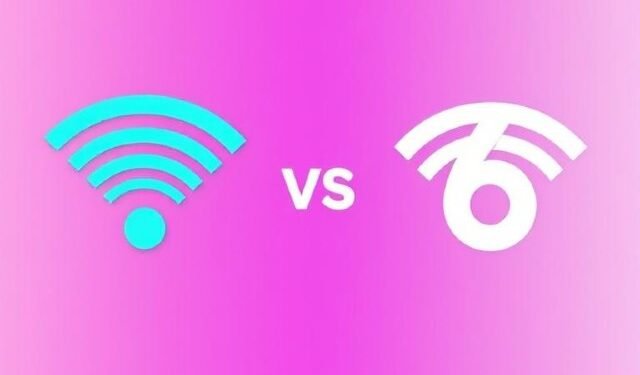In today’s connected world, having a reliable and fast internet connection is essential. With advancements in technology, WiFi standards have evolved to meet the growing demand for higher speeds and improved network efficiency. Two of the most common standards you’ll encounter are WiFi 5 and WiFi 6. But when it comes to choosing between WiFi 5 vs WiFi 6, which one is better for your needs? This article explores the differences between these technologies and helps you make an informed decision.
What Is WiFi 5?
WiFi 5, also known as 802.11ac, was introduced in 2014 and revolutionized home networking by delivering faster speeds and improved performance over its predecessor, WiFi 4. It operates primarily in the 5 GHz frequency band and offers features such as beamforming, which focuses signals toward specific devices for stronger connections.
Key Benefits of WiFi 5:
- Speeds up to 3.5 Gbps
- Reduced interference compared to the 2.4 GHz band
- Sufficient for HD video streaming, online gaming, and browsing
However, as more devices connect to home networks, WiFi 5 struggles to handle congestion efficiently.
What Is WiFi 6?
WiFi 6, or 802.11ax, is the next-generation WiFi standard designed to address the limitations of WiFi 5. Launched in 2019, it brings significant improvements in speed, capacity, and efficiency. WiFi 6 operates on both the 2.4 GHz and 5 GHz frequency bands and introduces features like OFDMA (Orthogonal Frequency Division Multiple Access) and MU-MIMO (Multi-User Multiple Input Multiple Output).
Key Benefits of WiFi 6:
- Speeds up to 9.6 Gbps
- Better performance in congested environments
- Enhanced battery life for connected devices (Target Wake Time feature)
- Improved security with WPA3 encryption
WiFi 5 vs WiFi 6: Speed and Performance
When comparing WiFi 5 vs WiFi 6, speed is often the first consideration. While WiFi 5 offers impressive speeds of up to 3.5 Gbps, WiFi 6 can reach speeds as high as 9.6 Gbps under optimal conditions.
Performance in Real-World Scenarios:
- WiFi 5: Ideal for households with moderate internet usage
- WiFi 6: Best suited for homes with multiple smart devices, gamers, and 4K/8K streaming
WiFi 6 vs WiFi 5: Device Connectivity
WiFi 6 handles multiple device connections more efficiently than WiFi 5. Thanks to technologies like OFDMA and MU-MIMO, WiFi 6 can serve multiple devices simultaneously without compromising speed.
In contrast, WiFi 5 is limited in its ability to manage multiple connections, leading to slower performance during heavy usage.
WiFi 5 vs WiFi 6: Coverage and Range
Both WiFi 5 and WiFi 6 operate on the 5 GHz frequency, which offers faster speeds but has a shorter range than the 2.4 GHz band. WiFi 6’s ability to operate on both frequencies provides better coverage and flexibility.
Energy Efficiency: WiFi 6 vs WiFi 5
WiFi 6 introduces the Target Wake Time (TWT) feature, which helps reduce power consumption for devices by scheduling communication times. This is particularly useful for IoT devices and smartphones, extending their battery life.
WiFi 5 does not have this energy-saving feature, making it less efficient for connected smart devices.
Security: A Key Consideration
WiFi 6 supports WPA3 encryption, offering enhanced security against cyber threats. On the other hand, WiFi 5 primarily uses WPA2, which is less secure.
Should You Upgrade to WiFi 6?
Here’s a quick guide to help you decide whether to stick with WiFi 5 or upgrade to WiFi 6:
Choose WiFi 5 If:
- You have a small household with minimal connected devices
- Your primary activities include browsing and HD video streaming
Choose WiFi 6 If:
- You have a smart home with multiple connected devices
- You need faster speeds for 4K/8K streaming and gaming
- You prioritize security and energy efficiency
Cost Considerations
WiFi 6 routers are generally more expensive than WiFi 5 models. However, the investment may be worthwhile for users who need high performance, better security, and future-proof technology.
Conclusion
When deciding between WiFi 5 vs WiFi 6, your choice should depend on your specific needs and budget. For households with moderate internet usage, WiFi 5 can still deliver reliable performance. However, if you’re looking for faster speeds, better security, and the ability to handle numerous devices simultaneously, WiFi 6 is the clear winner.
As technology continues to advance, upgrading to WiFi 6 is a smart move to ensure your home network stays ahead of the curve. Whether you’re streaming 8K videos, gaming, or running a smart home, WiFi 6 can handle it all with ease.








